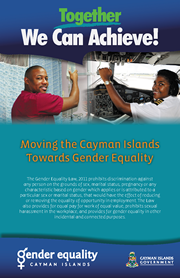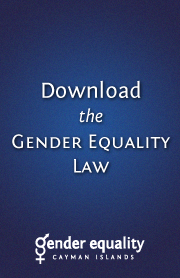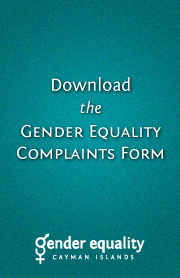A stereotype is a thought that someone has about specific types of individuals that may or may not accurately reflect reality. Stereotypes can also be thought of like caricatures, which are pictures that exaggerate certain features while oversimplifying others and end up distorting the essence of an individual. Many stereotypes are widely held but they are also overgeneralised images or ideas about a particular type of person. Any time we group individuals together and make a generalisation or judgment about them without knowing them, this is an example of a stereotype.
A prejudice is an opinion - usually an unfavourable one - that was formed before having any evidence and that is not based on reason or experience. While a stereotype is a thought about a person or group of people, a prejudice relates to feelings and attitudes about that person or group of people. Prejudices are often rooted in the idea that certain types of people are worth less or are less capable than others.
Discrimination refers to behaviour. It can be direct, indirect or structural and often results from stereotypes or prejudicial attitudes.
When we have expectations or feelings about people based on characteristics like sex, gender, marital status or pregnancy we may act in ways that negatively affect individuals or groups of people. Often we don't even think about the stereotypes or prejudices we hold and may hurt or disadvantage people without realising it. We may think that we are simply behaving in ways that accurately reflect the realities or abilities of men and women but we are actually discriminating and reinforcing inequality. Even if a stereotype is seen as or meant to be positive, the fact that not all persons in that group meet that standard often leads to a “positive” stereotype disadvantaging specific individuals.
Stereotypes and prejudices are harmful because they ignore the fact that each individual has his or her own abilities, strengths, weaknesses, desires, thoughts and feelings. Our sex and gender are part of who we are, but these characteristics do not define us. Even if a stereotype is correct in a specific situation, putting someone down or acting in a discriminatory way does not encourage that individual to succeed.
Stereotypes don't just describe what people are like; they also define what they should be like or what role they should have on the basis of characteristics such as sex, gender, marital status or pregnancy. Prejudices also lead people to make value judgements and assume what people can do or cannot do because of who they are. All of this leads to discrimination and limits equality of opportunity.
Some studies have even shown that when people are aware of specific stereotypes about themselves - for example, that girls are bad at math or that men are not good communicators - that knowledge affects their perceptions of their own abilities and also their performance.
In order to combat stereotypes and reduce prejudices we can all try to learn more about people, especially those who are different from us, and understand and value our similarities and our differences. If we are more conscious of our assumptions we can also choose how we respond – within our families and home lives; in the workplace as employers and employees; as parents, teachers and mentors to children; and in other relationships and positions that we have and hold.
Promoting gender equality means valuing men and women equally and promoting the right of men and women to have the same opportunities for the achievement of important goals in society such as education, employment and income and to contribute to political, social, and cultural development at all levels.
Countering Gender Discrimination and Negative Gender Stereotypes: Effective Policy Responses
UN Women Deputy Director and Assistant Secretary-General Lakshmi Puri moderated a panel discussion on this topic during the Coordination Segment of the Substantive Session of ECOSOC in Geneva, 13 July 2011. This link is to her introductory speech.
Toys Start the Gender Equality Rift
Stereotypes surrounding toys later in life become one of the most stubborn barriers to gender equality, with cascading implications for women's interests, skills and status in society.
Men being men is a bad deal
Robert Jensen argues that it's hard to live up to the demands that come with the dominant conception of masculinity and that guys should evolve beyond masculinity to create a better world for men and women.
Gender equality: what's in a stereotype?
Are girls really born with a desire to dress in pink and play with dolls while boys favour blue clothing and prefer to play with cars? And if not, why have these ideas become so ingrained in many countries that they are taken for granted?
Gender Stereotypes: An Analysis of Popular Films and TV
In this analysis, Dr. Stacy L. Smith and Crystal Allene Cook overview a series of four studies on gender parity and portrayal in the media, including the prevalence of stereotyped gender roles. The authors conclude that the results prove the need for more females and more diverse portrayals of females and males in movie and television entertainment aimed at children.
Opinion on “Breaking gender stereotypes in the media”
A report from the European Commission's Advisory Committee on Equal Opportunities for Women and Men proposes measures for the promotion of a balanced and non-stereotyped portrayal of women and men in the media and in new technologies of communication.



